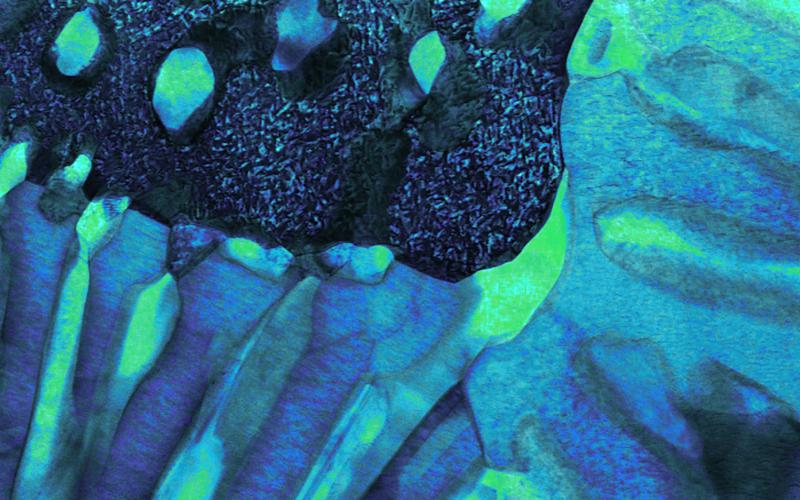Scientists from Oak Ridge National Laboratory (ORNL) have developed a new molybdenum (Mo) formulation that’s specifically optimized for use with Electron Beam Melting (EBM) 3D printers.
By mixing molybdenum with titanium carbide (TiC) powders, the ORNL team have been able to create a ‘Mighty Mo’ material, that overcomes the alloy’s usual brittleness and oxygen reactivity. Once EBM 3D printed, the metal matrix composite yields dense, crack-free parts that are capable of enduring extreme temperatures, potentially making it ideal for use within demanding aerospace applications.
“Our results showed that fabrication from a mechanically alloyed metal matrix composite powder is feasible,” said ORNL’s Mike Kirka. “The structures formed by the fused powders can withstand high temperatures, indicating that molybdenum and its alloys can be used for aerospace and energy conversion applications.”

Taming the troublesome Mo
As a refractory metal, molybdenum features several properties that make it an attractive option for deployment within ultra-temperature-sensitive areas. The alloy is characterized by an elevated melting point of 2622oC as well as a low thermal expansion coefficient, heat conductivity and corrosion resistance, but it’s also known to show poor toughness at certain temperatures.
Additionally, molybdenum is extremely sensitive to nitrogen and oxygen contamination during processing, which can cause its grain boundaries to segregate, resulting in part cracking. In the limited research that’s already been conducted in this area, scientists have mixed the metal with other materials in an attempt to better control its recrystallization and grain size, but to little effect.
Back in 2017, researchers from Austrian powder producer Plansee Group did manage to use simulation data to quantify how molybdenum’s particle size contributes to its SLM printing sensitivity, but didn’t resolve the issue outright. By contrast, the ORNL team has now found that by adding TiC particles to the alloy and switching to EBM, that it’s possible to fabricate microstructures with new levels of robustness and rigidity.

ORNL’s ‘Mighty Mo’ formula
In order to formulate their material, the scientists mixed Mo and TiC powders at a ratio of 60:40 inside a graduated cylinder, which was flooded with argon gas to prevent oxidization. The resulting metal matrix composite was then mechanically alloyed using a planetary ball mill for eight hours, until it was ready for 3D printing.
To process their new powder, the ORNL team developed a customized Arcam S12 EBM 3D printer, featuring a modified build chamber composed of a piston, feeder, rake and table powder bed delivery system. The machine’s upgrades effectively optimized it for small builds, while enabling advanced process monitoring and secondary material feeding to take place.
Leveraging their machine, the researchers opted to 3D print six parts measuring 12 mm (D) x 13 mm (H) with sandwich-like structures, containing a layer of Mighty Mo encased between two layers of pure molybdenum. Interestingly, SEM imaging revealed that none of the pure samples had suffered any cracking whatsoever, but they did exhibit some surface inconsistencies due to powder spreading.
Later, the team carried out thermodynamic modelling, which also showed that the process remains extremely sensitive to changes in composition and temperature. As a result, the ORNL scientists surmised that tightly managing process inputs will be key to creating future microstructures out of molybdenum, without causing changes in part layer consistency or temperature gradients during processing.
Ultimately, the researchers also concluded that they had demonstrated the feasibility of 3D printing pure crack-free molybdenum, and with a perfected parameter set, the alloy could find new applications within the aerospace or energy conversion sectors, in areas such as heat-transferring components.
Molybdenum-based 3D printing
Although 3D printing pure crack-free molybdenum remains challenging, a number of material manufacturers have managed to mix the alloy with other metals, to yield much more processable products. Farsoon customer Hiwing Titanium Industrial, for instance, recently developed its thermally-resistant Mo-infused ‘TA32’ 3D printing material.
Capable of withstanding operating temperatures of up to 550oC, the metal is designed to act as an alternative to steel or nickel-based superalloys. Similarly, Singapore-based scientists have previously managed to improve the printability of the Mo-loaded Inconel 625 alloy, by mixing it with titanium diboride nanoparticles.
Elsewhere, 3D printer OEM Meltio has revealed that it too is validating molybdenum for use with the latest version of its proprietary Meltio Engine. Having successfully tested stainless steel, Inconel (718 and 625) and Ti-6Al-4V (grades 5 and 23), the firm is now validating copper, aluminum, tungsten, X9 and gold amongst others.
The researchers’ findings are detailed in their paper titled “Additive Manufacturing of Pure Mo and Mo + TiC MMC Alloy by Electron Beam Powder Bed Fusion.” The research was co-authored by Christopher Rock, Edgar Lara-Curzio, Betsy Ellis, Christopher Ledford, Donovan N. Leonard, Rangasayee Kannan, Michael Kirka and Timothy Horn.
To stay up to date with the latest 3D printing news, don’t forget to subscribe to the 3D Printing Industry newsletter or follow us on Twitter or liking our page on Facebook.
Are you looking for a job in the additive manufacturing industry? Visit 3D Printing Jobs for a selection of roles in the industry.
Featured image shows an SEM Image of the ORNL team’s 3D printed ‘Mighty Mo’ material. Image via ORNL.



